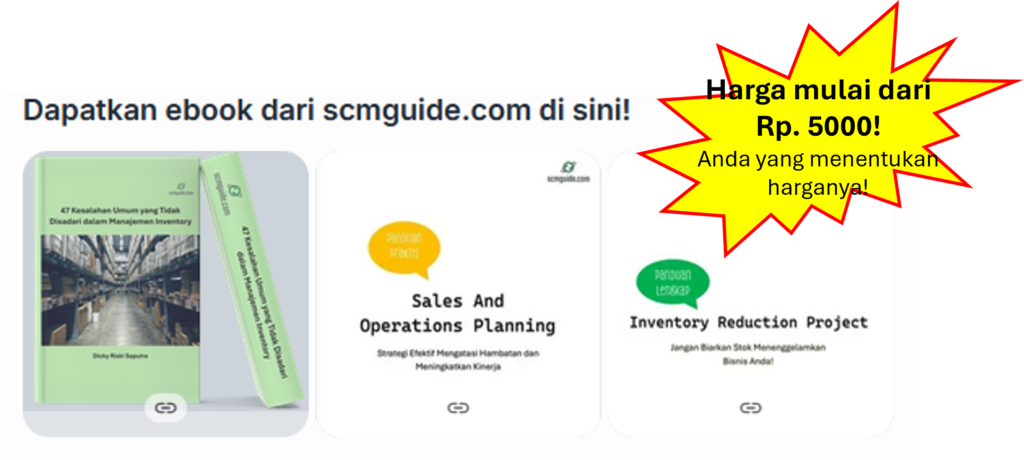When running a business, it can be challenging to decide where to allocate resources and prioritize expenses.
One common decision is whether to prioritize COGM (Cost of Goods Manufactured) or COGS (Cost of Goods Sold).
In this blog post, we will discuss the impact of prioritizing COGM over COGS, whether it is a good decision, the impact on the supply chain, and how to make everyone understand what to prioritize.
But before we discuss further, make sure you have also joined the scmguide telegram channel so you don’t miss the latest post notifications from this blog and get more insights about other supply chain management topics.
Table of Contents
What is COGM and COGS?
COGM refers to the total cost of producing goods during a specific period, including direct materials, direct labor, and manufacturing overhead. It does not include the costs of selling and distributing the products.
COGS, on the other hand, refers to the total cost of goods sold during a specific period, including the cost of producing the goods and any additional expenses associated with selling them, such as marketing, packaging, and shipping.
Is prioritizing COGM Over COGS a good decision?
The decision to prioritize COGM over COGS or vice versa depends on a company’s business model and goals.
While prioritizing COGM can help reduce production costs and improve profitability, it’s important to ensure that this does not come at the cost of product quality, production capacity, or customer satisfaction.
Similarly, while prioritizing COGS can help reduce the price of a product, increase sales volume, and improve profitability, it’s important to ensure that this does not come at the cost of production costs or product quality.
The impact on the supply chain
Prioritizing COGM over COGS can have a significant impact on the supply chain.
For example, reducing production costs may involve using cheaper materials or reducing labor costs, which can affect product quality and reliability.

Additionally, prioritizing COGM may lead to a focus on production efficiency rather than meeting customer demand, which can lead to inventory build-up and higher carrying costs.
Finally, prioritizing COGM may result in reduced capacity utilization, which can increase fixed costs and lead to decreased profitability.
On the other hand, prioritizing COGS may result in increased pressure on suppliers to reduce their costs, which can lead to reduced quality and reliability.
Additionally, focusing on reducing sales costs may lead to increased competition and pricing pressure, which can affect profitability.
Finally, prioritizing COGS may lead to an overemphasis on short-term profitability rather than long-term sustainability and growth.
You might also like:
- Improving the Efficiency of Non-Standard Warehouses: Renovation or Better Utilization?
- Navigating Office Politics in Supply Chain Management: Strategies for Success
What should be prioritized and why?
While there is no one-size-fits-all answer to the question of whether to prioritize COGM or COGS, a balanced approach that takes into account both cost reduction and customer satisfaction is generally the most effective.
Companies should prioritize the creation of high-quality products that meet customer needs and preferences, while also ensuring that their production costs are as low as possible.
Additionally, companies should prioritize long-term sustainability and growth, rather than short-term profitability, to ensure that they can remain competitive in the long run.
Why do some people prioritize COGM over COGS?
There are several factors that may lead some people to prioritize COGM over COGS.
For example, reducing production costs can lead to increased profitability, which is particularly important for companies operating in highly competitive markets.
Additionally, focusing on COGM can help companies improve their manufacturing processes, leading to increased efficiency and productivity.
Finally, some people may prioritize COGM over COGS because they believe that it is easier to control and manage production costs than sales costs, which can lead to more accurate cost predictions and better-informed business decisions.
How to make everyone understand what to prioritize?
Making everyone understand what to prioritize can be challenging, particularly in large organizations with complex supply chains.
However, there are several steps that companies can take to ensure that everyone is on the same page.
First, companies should clearly communicate their business model and goals to all employees, suppliers, and partners. This will help everyone understand the company’s priorities and make informed decisions that support these priorities.

Second, companies should establish clear metrics for measuring success and regularly communicate progress towards these metrics to all stakeholders. This will help everyone understand what is important and what actions are necessary to achieve success.
Third, companies should involve all stakeholders in decision-making processes related to cost reduction and product development. This will ensure that everyone’s perspectives are taken into account and that decisions are made with the company’s overall goals in mind.
Fourth, companies should invest in training and development programs to help employees and suppliers understand the importance of customer satisfaction, quality, and long-term sustainability. This will help everyone understand the importance of balancing cost reduction with other priorities.
Finally, companies should be open to feedback and actively seek out opportunities for improvement. By listening to feedback from employees, suppliers, and customers, companies can continuously improve their operations and ensure that everyone is working towards the same goals.
You might also like:
- The Importance of Transparency in Supply Chain Audit for Improved Efficiency and Risk Management
- Fast Logistics vs. Cheap Cost: Which One is More Important?
Conclusion
In conclusion, the decision to prioritize COGM over COGS or vice versa is a complex one that depends on a company’s business model and goals.
While prioritizing COGM can help reduce production costs and improve profitability, it’s important to ensure that this does not come at the cost of product quality, production capacity, or customer satisfaction.
Similarly, while prioritizing COGS can help reduce the price of a product, increase sales volume, and improve profitability, it’s important to ensure that this does not come at the cost of production costs or product quality.
Ultimately, a balanced approach that takes into account both cost reduction and customer satisfaction is generally the most effective, and companies should prioritize long-term sustainability and growth to remain competitive in the long run.
By clearly communicating priorities, establishing clear metrics, involving all stakeholders in decision-making processes, investing in training and development programs, and being open to feedback, companies can ensure that everyone is working towards the same goals and driving success in the supply chain.
Hope it useful!
Also share this article with your colleagues so that they can benefit from it too. Join the scmguide telegram channel so you don’t miss the latest updates from this blog. All articles on this blog are free to use for any purpose, including commercial use, without the need for attribution.

 by
by 


